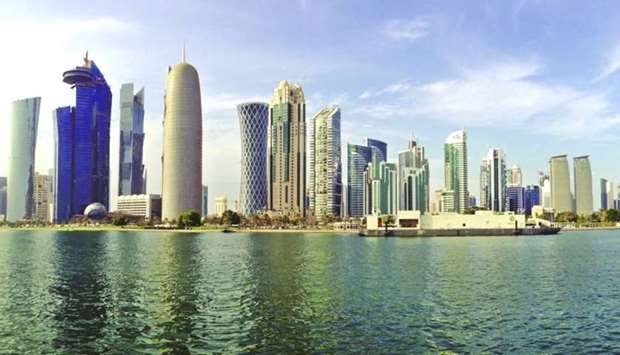Moreover, reserves at the Qatar Investment Authority (QIA, the sovereign wealth fund) are sufficient to maintain the currency peg to the dollar for several years, meaning that a “devaluation remains a distant prospect” EIU said in an overview.
Qatar’s fiscal position (which is now in a surplus) is also strengthening, because of an increase in oil and gas revenue, although spending on subsidies and wages will remain a “constraint on the rating”.
In terms of the sovereign risk rating, EIU said it “is supported by an increase in hydrocarbons export revenue in recent months and a commensurate increase in central bank reserves.”
Recently, S&P affirmed Qatar’s sovereign credit ratings at ‘AA-/A-1+’. The strength of Qatar’s macroeconomic resilience was the basis for the recent “stable outlook” on the economy provided by international ratings agency.
Meanwhile, EIU noted that “liquidity injections” from the QIA and “access” to international capital markets (albeit at rising premiums) will keep domestic lenders “solvent” in 2019 20.
And the country’s banking sector risk rating is supported by “strong liquidity positions” stemming from the rise in oil prices.
Qatar’s banking sector remains “resilient and healthy” with credit continuing to flow, ample liquidity and asset quality and profitability robust, S&P said while affirming Qatar’s sovereign ratings.
The ratings agency noted it does not expect the banks to need additional government support, and non-resident deposits have gradually returned to the banking system.
It noted the “outflow of external financing” for Qatari banks, primarily non-resident deposits and inter-bank placements – an impact of the blockade – was “offset by liquidity injections” from the Qatar Central Bank and repatriation into the domestic banking sector of about $40bn in the public sector, mostly the Qatar Investment Authority assets previously held abroad.
EIU said Qatar’s economic diversification investment projects will sustain robust growth until 2030, before slowing thereafter. There remains potential for bursts of high growth if further gas export projects, beyond those planned for the mid-2020s, are approved by the government.
“Diversification and the expansion of the services sector, funded by the state's hydrocarbons wealth, will also provide opportunities for growth. The population will continue to increase, largely through immigration, to 3.8mn in 2050. As a result, growth in real GDP per head will be much slower than growth in real GDP,” EIU said.
Qatar’s fiscal position (which is now in a surplus) is also strengthening, because of an increase in oil and gas revenue, although spending on subsidies and wages will remain a “constraint on the rating”.
In terms of the sovereign risk rating, EIU said it “is supported by an increase in hydrocarbons export revenue in recent months and a commensurate increase in central bank reserves.”
Recently, S&P affirmed Qatar’s sovereign credit ratings at ‘AA-/A-1+’. The strength of Qatar’s macroeconomic resilience was the basis for the recent “stable outlook” on the economy provided by international ratings agency.
Meanwhile, EIU noted that “liquidity injections” from the QIA and “access” to international capital markets (albeit at rising premiums) will keep domestic lenders “solvent” in 2019 20.
And the country’s banking sector risk rating is supported by “strong liquidity positions” stemming from the rise in oil prices.
Qatar’s banking sector remains “resilient and healthy” with credit continuing to flow, ample liquidity and asset quality and profitability robust, S&P said while affirming Qatar’s sovereign ratings.
The ratings agency noted it does not expect the banks to need additional government support, and non-resident deposits have gradually returned to the banking system.
It noted the “outflow of external financing” for Qatari banks, primarily non-resident deposits and inter-bank placements – an impact of the blockade – was “offset by liquidity injections” from the Qatar Central Bank and repatriation into the domestic banking sector of about $40bn in the public sector, mostly the Qatar Investment Authority assets previously held abroad.
EIU said Qatar’s economic diversification investment projects will sustain robust growth until 2030, before slowing thereafter. There remains potential for bursts of high growth if further gas export projects, beyond those planned for the mid-2020s, are approved by the government.
“Diversification and the expansion of the services sector, funded by the state's hydrocarbons wealth, will also provide opportunities for growth. The population will continue to increase, largely through immigration, to 3.8mn in 2050. As a result, growth in real GDP per head will be much slower than growth in real GDP,” EIU said.


